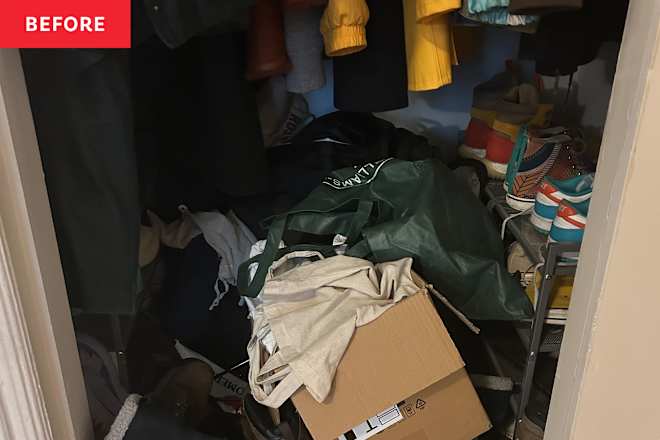How the GOP Tax Bill Still Leaves Blue States Picking Up the Check
GOP tax bill debate spotlights SALT cap, as blue states subsidize national spending.


The biggest sticking points roiling the Republicans’ confidence to pass President Donald Trump’s ambitious spending bill centers around deductions for state and local taxes, the so-called SALT cap, and Medicaid funding. Republican House members are expected to continue deliberations into the weekend after Reps. Andrew Clyde (R-GA), Chip Roy (R-TX), and Nicole Malliotakis (R-NY), among others, have vociferously shared their respective concerns about the bill throughout the week. [time-brightcove not-tgx=”true”]
Republican budget hawks want to keep the SALT cap as-is and make more “meaningful change” to Medicaid spending. At the same time, their moderate counterparts desire greater tax relief for those states with higher state and local tax systems and more generous assurances for Medicaid coverage. Meanwhile, Democrats have been left on the sidelines, hoping the GOP implodes ahead of the 2026 midterm elections.
Many Republicans like to repeat the oft-used line that the federal government must raise more tax dollars or slash spending to cover budget deficits driven by Democrats’ reliance on entitlements. They are not wrong in saying the fiscal debt load is untenable.
Still Republicans need to recognize that they have possibly become more dependent on entitlement programs and federal dollars than blue states. And Democrats must leverage the opportunity granted as the Trump bill threatens to retain a SALT cap and tighten requirements for Medicaid coverage that harm voters on both sides. After all, blue states are subsidizing red states’ fiscal shortcomings, and a SALT cap will ensure that remains the case.
The total net differential between federal tax receipts from states and federal dollar contributions to states from 2018 to 2022 amounted to a more than $1 trillion transfer payment from blue to red states. In 2017, Republicans used the SALT cap to place even more of the federal receipts tax burden on blue states. The Joint Committee on Taxation estimated the SALT cap raised federal revenue by $78 billion for the 2019 tax year, most of which fell on blue states.
Over a similar five-year period, that annual $78 billion amounts to nearly $400 billion, or close to 40% of the total transfer payment. Four blue states are responsible for 50% of the estimated increase in federal tax revenues from the SALT cap: California (25.1%), New York (16.8%), New Jersey (6.4%), and Illinois (4.2%). Forty of the top 50 districts most affected by the SALT cap are in New York, California, New Jersey, and Illinois.
But in fiscal year 2023, the per capita federal share of spending on Medicaid in red states that have chosen to expand the public health insurance program – the majority have at this point – nearly equaled ($1,960) that of blue states ($2,100). Even on a total dollar basis across all states, not just those adopting Medicaid expansion, blue states received a lower proportion of Medicaid funding from the Centers for Medicare & Medicaid Services than the federal government collected from them in federal tax receipts.
Many studies consider the incremental dollars spent on Medicaid by blue states to be a wise investment. Health outcomes were improved with fewer cases of obesity, high blood pressure, diabetes, and cardiovascular conditions, among other diseases, as well as higher life expectancy. State economies were more likely to thrive with enhanced labor productivity, better educational outcomes, lower debt burdens, and higher credit scores. Both benefits lead to improved state fiscal conditions.

The Trump administration and MAGA Republicans should perhaps at least be given credit for consistency. Their reported desire is to end FEMA’s role in disaster recovery assistance, shifting the agency’s organizing and funding responsibilities to states. Once again, the consequences will be severe for red states, as natural disasters, outside of California wildfires, are less common in blue states. Florida (25%), Louisiana (20%), and Texas (5%) alone have received half of the nearly $40 billion in FEMA disaster relief, and almost three-quarters has gone to red states since 2018. Dating back to 1980, weather and climate disasters have been particularly costly for red states, with Florida and Texas topping US records at $450 billion and $436 billion in costs, respectively.
It should be noted that red states have been taking advantage of blue states since at least the 1980s in some respects. The Base Realignment and Closure (BRAC) Commission was established in 1988 to assess the efficiency of military installations in the US. The Commission was soon activated to close bases largely in regions with a heavy blue state representation. Since 1988, red-state-dominant regions (i.e., Southeast, Southwest) have seen their share of installations increase by 6 percentage points compared to blue-state-dominant regions (i.e., Northeast, Mid-Atlantic) realizing a decrease of 7 percentage points.
As Speaker Mike Johnson (R-LA) leads the Republican Party into what will likely be a long weekend of negotiations, the GOP must respect that its slim majority in the House and Senate could be threatened by making the wrong move on the SALT cap and Medicaid cuts. Republican voters in blue and red states have become reliant not only on entitlements and federal funding but also on the blue state tax dollars that allow the US to provide those benefits. For those Democrats still looking for a clear opportunity, here it is.














![[FREE EBOOKS] Modern Generative AI with ChatGPT and OpenAI Models, Offensive Security Using Python & Four More Best Selling Titles](https://www.javacodegeeks.com/wp-content/uploads/2012/12/jcg-logo.jpg)




.webp?#)


























































